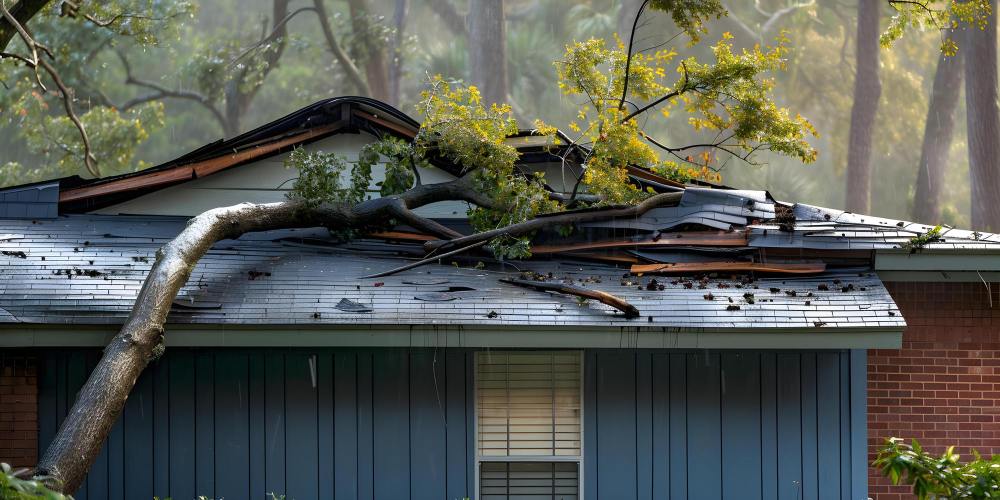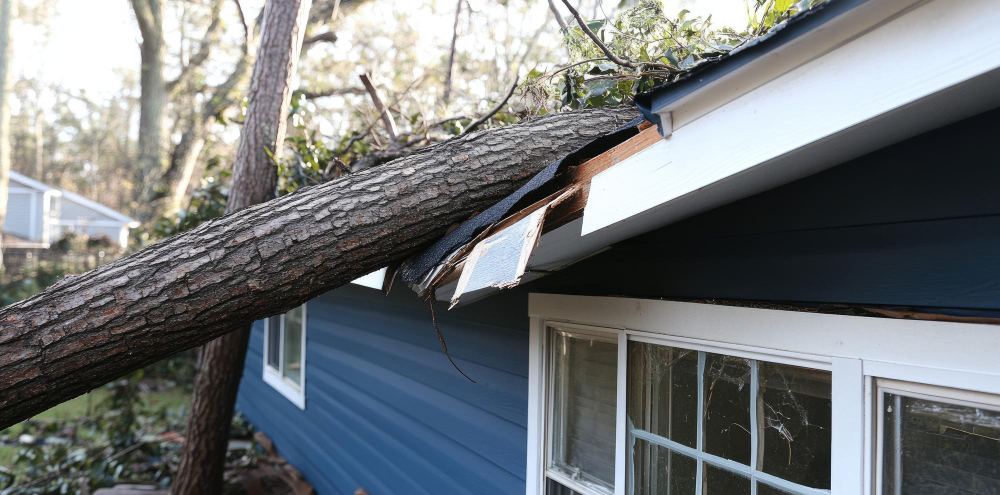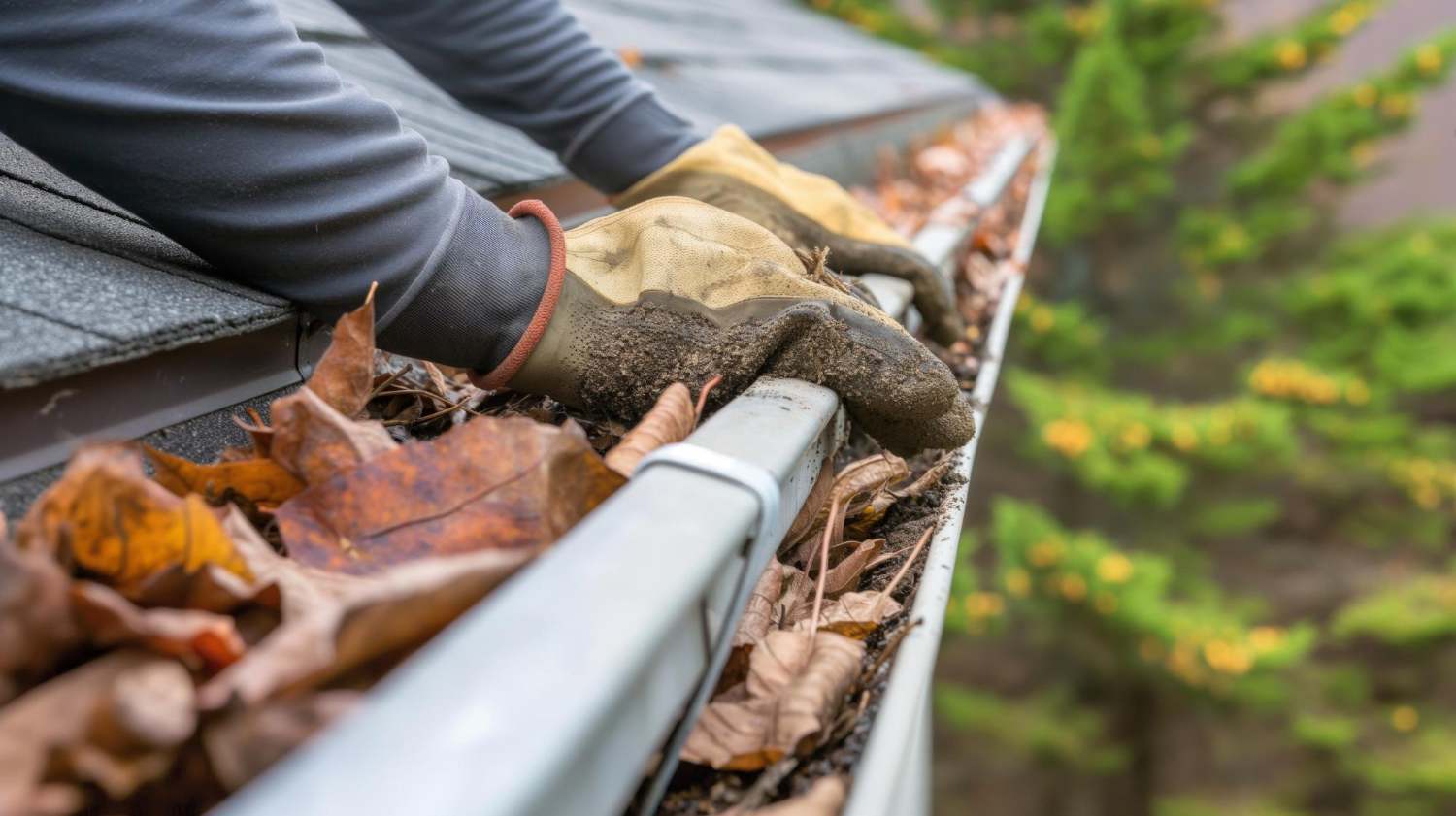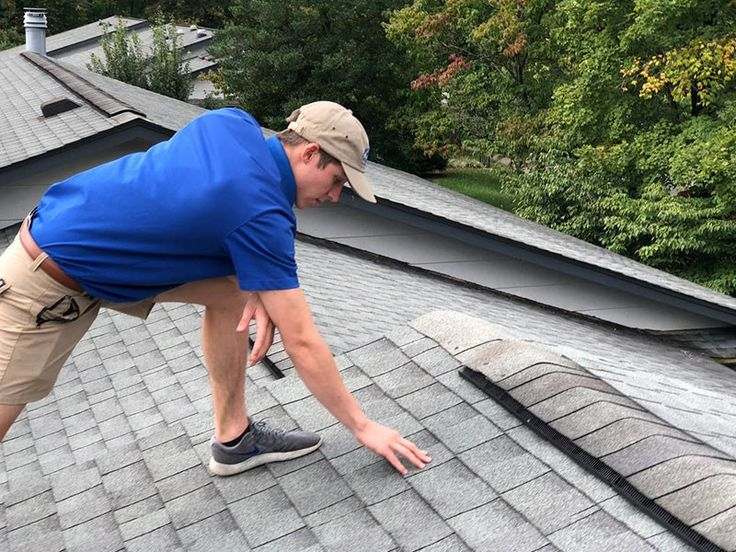With severe weather becoming more common and stronger, homeowners need to take steps to protect their homes. The area of your home that is the most vulnerable during a storm is the roof, which bears the brunt of high winds, heavy rain, and hail. To help you prepare and avoid potential storm damage to your roof, we’ve created a comprehensive checklist. This guide includes some essential steps that can prove to be helpful to protect your roof and keep your home safe and secure during the worst conditions.
Storm and Its Types
A storm is a strong weather event characterised by high winds and typically accompanied by precipitation, such as rain, snow, or hail, as well as lightning and thunder. Each type of storm has its own life cycle and usually occurs in specific seasons when the weather is right for its formation.
The term “storm” can have different meanings for various individuals. While it doesn’t have a specific definition like a hurricane, it usually means a serious low-pressure system with strong winds and heavy rain. In essence, a storm represents a period of rough and extreme weather. Below, we explore types of storms and the damage caused by them:
Windstorms
Hurricane-force winds, which are gusts of 74 mph or more, along with gale-force winds of 39 to 54 mph, can damage your roof. These strong winds can tear off shingles, exposing the layers underneath to harsh weather conditions. Even during mild storms, unexpected gusts can raise and twist shingles. Shingles are installed to overlap, creating a waterproof barrier; however, curling and lifting can compromise that barrier, making your roof vulnerable to rain driven by wind.
Hailstorms
Hailstorms are usually short, lasting no more than 15 minutes, but the hailstones can cause dents in shingles and knock off protective granules. These granules protect your roof structure from rain and sun damage. Furthermore, hail damage can affect the overall appearance of your roof.
Possible Damage Caused by Different Types of Storms
Standing Water
Roofs without proper drainage can experience issues with water pooling after heavy rainfall, especially in low-lying areas. Clogged gutters can cause rainwater to seep under the shingles, letting moisture into the roof.
Debris
The strength of the storm impacts how much debris lands on your roof, ranging from small branches to bigger tree limbs. A lot of debris can dent or damage the shingles, allowing moisture to seep in, while lighter branches are generally less of a problem.
Steps to Take Before a Storm
Climate change is increasing how often and how severely storms occur. This causes a lot of damage to homes and businesses, leading to expensive repairs and interruptions to daily routine. By taking preventive steps to protect your property and preparing properly, you can reduce the likelihood of damage and avoid the stress and expenses associated with storm-related issues.
Here’s a simple storm damage prevention checklist to keep your property safe before a storm.
Adhere to Safety Precautions: To avoid any long-term and costly damage to your roof, ensure you follow safety precautions:
- Secure or remove loose materials to stop them from blowing away.
- Keep away from fragile roofs and exposed edges.
- Maintain distance from power lines and wires.
- Capture images of visible damage from a safe distance.
- Avoid unstable or partially collapsed structures.
Check Your Property’s Drains: Make sure rainwater drains away from your property. Clogged drains can lead to stagnant water which can infiltrate your property and become dangerous for the structural foundations.
Inspect Gutters for Damage or Debris: Regularly check your gutters for blockages or damage. Clear leaves and debris to keep water flowing freely and prevent overflow damage.
Inspect Flat Roofs for Damage or Leaks: Flat roofs can easily get damaged because they don’t drain water well. Check them regularly for any problems, and fix or replace any damaged parts before bad weather hits.
Check Roof Tiles and Slats: Loose or cracked roof tiles can cause leaks during heavy rain. Inspect your roof regularly and replace broken tiles to keep water from entering your home.
Inspect Chimney Mortar: Chimneys are often neglected due to height. Damaged mortar can cause serious issues, so check your chimney’s mortar and repair it as needed for long-term safety during storms.
Look for Cracks in Walls: Examine your home’s exterior for any noticeable signs of cracks. These can let water in, leading to dampness and structural issues. Repair any cracks promptly to prevent water from entering your property.
Check for Leaks Around Windows & Doors: Leaks around windows and doors can happen during storms. Check for any gaps that might allow water to enter your home and seal them to protect your walls and floors.
Inspect the Loft for Hidden Leaks: The loft often has hidden leaks. Check for damp areas that might suggest a roof leakage issue. Promptly addressing these issues can avert significant complications and extensive problems.
Check Outdoor Drainage Systems: Make sure spaces like patios, decks, or driveways are properly maintained and placed below the damp course level to avoid water intrusion during heavy rains.
Ensure Tree Safety: Regularly check trees near your house for health and stability. Dead or unstable trees can fall during storms, damaging your roof or causing traffic issues.

Steps to Take After a Storm
Use this storm damage checklist to identify the damage your roof may have experienced and assess if you require a completely new roof or only specific repairs or replacements.
Make A Thorough Inspection Checklist
Safety First: Always prioritise safety. Find a trustworthy roofer to inspect for damage. Many offer free inspections and know how to check roofs safely.
Check Roof: Walk around your home to check for storm damage visually. Check from windows if possible. Create a checklist and capture photos for insurance claims. Watch for indicators such as dents, items that are missing, or any curled shingles and torn areas.
Gutters, Vents & Windows: Examine gutters and roofing for dents. Look for cracks, broken glass, or loose parts.
Outside Areas: Walk around the exterior part of your property to find fallen branches, missing fence posts, or damaged outdoor furniture. Examine patios and decks for hail damage.
Attic and Ceiling: Check for leaks and water stains in this area. Even if the roof looks fine, hidden leaks from wind and hail can occur. Inspect ceilings and attic spaces with a flashlight for any signs of water damage.
Choose a Reliable and Trustworthy Roofing Contractor
Collaborating with reliable contractors is essential. Seek licensed and insured experts who have experience in storm damage repairs, particularly those acquainted with your specific type of roof. Obtain several quotes, read reviews, and request references. Additionally, ensure you comprehend the guarantee and payment conditions before finalizing a contract.
Communicating with a Trusted Roofing Contractor
It’s essential to know which questions to ask and what to look for when conversing with and selecting a trustworthy roofing contractor. Here are some tips:
- Ensure the contractor holds the necessary licenses and insurance, and offers a satisfactory warranty for their work.
- Check that they can accurately assess and estimate any damage.
- Look for online reviews about their services from other customers.
Contact Your Homeowner’s Insurance Provider
If you find serious damage to your home after a storm, contact your homeowner’s insurance provider right away to file a claim according to their rules. A representative can help you submit the claim and get fair compensation based on the notes and photos recorded after damage assessment. The insurance company might send an experienced roofer to inspect and assess the damage to the roof after a storm.
Conclusion
It is crucial to have a comprehensive roof storm damage checklist to ensure your home is adequately prepared for severe weather events. By systematically assessing your roof’s condition and addressing potential vulnerabilities, you can protect your home from the damaging effects of storms. Regular inspections and timely maintenance not only enhance the resilience of your roof but also provide you with peace of mind during unpredictable weather conditions. Keep in mind that being prepared is essential for reducing harm and safeguarding your family and property.




